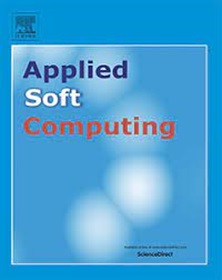TFGNet: Frequency-guided saliency detection for complex scenes
IF 7.2
1区 计算机科学
Q1 COMPUTER SCIENCE, ARTIFICIAL INTELLIGENCE
引用次数: 0
Abstract
Salient object detection (SOD) with accurate boundaries in complex and chaotic natural or social scenes remains a significant challenge. Many edge-aware or/and two-branch models rely on exchanging global and local information between multistage features, which can propagate errors and lead to incorrect predictions. To address this issue, this work explores the fundamental problems in current U-Net architecture-based SOD models from the perspective of image spatial frequency decomposition and synthesis. A concise and efficient Frequency-Guided Network (TFGNet) is proposed that simultaneously learns the boundary details (high-spatial frequency) and inner regions (low-spatial frequency) of salient regions in two separate branches. Each branch utilizes a Multiscale Frequency Feature Enhancement (FFE) module to learn pixel-wise frequency features and a Transformer-based decoder to learn mask-wise frequency features, improving a comprehensive understanding of salient regions. TFGNet eliminates the need to exchange global and local features at intermediate layers of the two branches, thereby reducing interference from erroneous information. A hybrid loss function is also proposed to combine BCE, IoU, and Histogram dissimilarity to ensure pixel accuracy, structural integrity, and frequency distribution consistency between ground truth and predicted saliency maps. Comprehensive evaluations have been conducted on five widely used SOD datasets and one underwater SOD dataset, demonstrating the superior performance of TFGNet compared to state-of-the-art methods. The codes and results are available at https://github.com/yiwangtz/TFGNet.
求助全文
约1分钟内获得全文
求助全文
来源期刊

Applied Soft Computing
工程技术-计算机:跨学科应用
CiteScore
15.80
自引率
6.90%
发文量
874
审稿时长
10.9 months
期刊介绍:
Applied Soft Computing is an international journal promoting an integrated view of soft computing to solve real life problems.The focus is to publish the highest quality research in application and convergence of the areas of Fuzzy Logic, Neural Networks, Evolutionary Computing, Rough Sets and other similar techniques to address real world complexities.
Applied Soft Computing is a rolling publication: articles are published as soon as the editor-in-chief has accepted them. Therefore, the web site will continuously be updated with new articles and the publication time will be short.
 求助内容:
求助内容: 应助结果提醒方式:
应助结果提醒方式:


